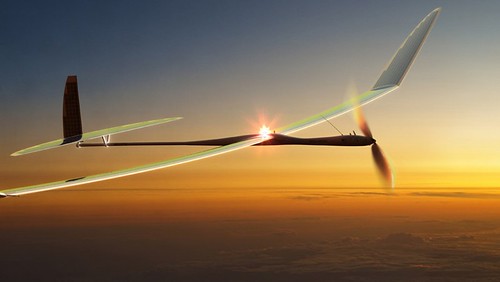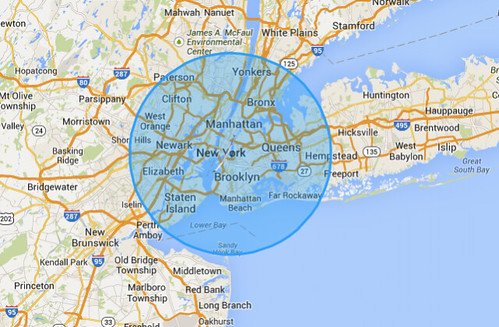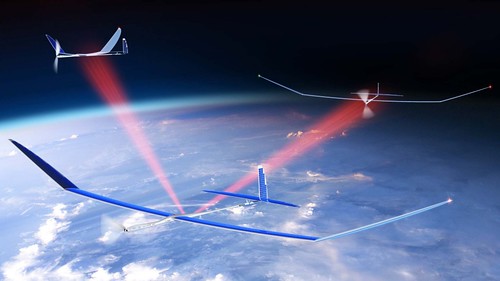TechCrunch has heard that Facebook is buying Titan Aerospace, makers of near-orbital, solar-powered drones. They can fly for five years without needing to land and Facebook may use these high-flying drones to blanket parts of the world without Internet access, beginning with Africa.
Facebook apparently has plans to use 11,000 of these unmanned aerial vehicles (UAVs), specifically the “Solara 60″ model. According to TechCrunch, Facebook may have paid $60 million for the company. The Solara 50 has a 50 m (164 feet) wingspan. The upper surfaces of its wings and tail are packed with over 3,000 photovoltaic cells capable of generating up to 7 kilowatts. Technology demonstrations has flown with initial commercial operations planned for 2015.
Facebook does not have any plans to build or operate its own wireless network, reports Fierce Wireless. Instead it is working with carriers and partners around the globe to connect more people to the mobile Internet. At Mobile World Congress last week, Chris Weasler, Facebook’s head of global connectivity, said that it’s important for Facebook to focus on what it does best and leave the building of networks to operators. But that was last week.
The Solara 50 and 60 models can be launched at night, then when the sun rises, they can store enough energy to ascend to 20KM (65,000 feet or about 12 miles) above sea level where they can remain for five years. A repeater on the aircraft re-transmits signals from a “base station” on the ground, which can be picked up by a mobile receiver.
As a communications relay, the Solara offers about an 18-mile radius of coverage easily covering all of New York City’s five boroughs, as shown in the map above. Of course 10 million people can’t simultaneously access one cell tower 12 miles away.
TriLumina’s “Light Engine” may provide up to 40 Gbps interlinks between the SOLARA nodes. “TriLumina’s optical backhaul technology will allow each SOLARA in a constellation to have aggregate access to a total of 120 Gbps via interlinks with its 4 neighboring constellation nodes,” Kyocera’s ultra-efficient macro base station, weighs less than 18 kg and uses only 211 watts or less power. It was shown at MWC 4 years ago.
The aircraft could supply regional Internet services, like those that Facebook’s Internet.org is planning. Ars Technica and Defense Update have more on solar powered aircraft platforms.
Google will use high-flying balloons, among other technologies, to deliver Internet to remote areas. Google’s Project Loon sails through the stratosphere, where there are different wind layers. Using wind data from the National Oceanic and Atmospheric Administration (NOAA), the balloons are maneuvered by identifying the wind layer with the desired speed and direction and then adjusting altitude to float in that layer.
Related DailyWireless Space and Satellite News includes; Inside Google’s Loon Project, Project Loon Field Trip Hangout, First Four O3B Satellites Launched, Google Backhaul: Balloons & Satellites, Kymeta’s Flat Beamforming Antenna Links to Satellite, Blimp In A Box, ExactEarth Launches 5th AIS Satellite, Dish: Lower 700MHz Power Ups Speculation, Earth to Space Optical Communications – Again, O3B: Funded for Launch, Arianespace: Busy 2013, Gilat Does Satellite Cell Backhaul, SkyTerra 1 Launched, Broadband Satellites: Black Hole?, LightSquared: Phase 1, Intelsat Announces EpicNG Satellite Platform , Satellite 2012, Formation Flying Swarmbots, Flying Cell Towers,
Posted on Tue, 04 Mar 2014 17:00:50 +0000 at http://www.dailywireless.org/2014/03/04/...e-company/
Comments: http://www.dailywireless.org/2014/03/04/.../#comments



